Bald Eagles
With a white head and tail, and a wingspan of over two meters, the Bald Eagle is both impressive and easy to identify. Eagles have a permanent presence around Kootenay Lake. This isn’t to say that all the eagles seen live here; migrants pass through the area; the Kokanee run in the fall attracts tourists; but, unlike ospreys, there are local eagles here year round.

 Intarsia of a Bald Eagle by local artist, Gail Burton.
Intarsia of a Bald Eagle by local artist, Gail Burton.
Eagles build large nests in the upper parts of trees within easy reach of the Lake. They primarily eat fish, which they catch themselves, find dead, or steal from other birds. They are frequently seen bullying Ospreys in an often successful attempt to steal their fish. They also feed on live prey such as waterfowl, and smaller birds, and have a taste for carrion, such as road kill (which carries the risk for them of being killed by a car).
Eagle nests are not nearly as easy to find around the Lake as are those of osprey. Not only aren’t eagles as plentiful, but they do not nest in nearly as conspicuous places. There is an eagle’s nest along the lakeside only about two kilometers from my home, but alas, I needed help to find it.
Bald Eagles undergo many plumage changes during the four or five years it takes them to reach sexual maturity. A suplemental page, eagle age, describes these changes in appearance.
The Golden Eagle, s distantly related species, is found in the mountains around the Lake where it is much less conspicutous.
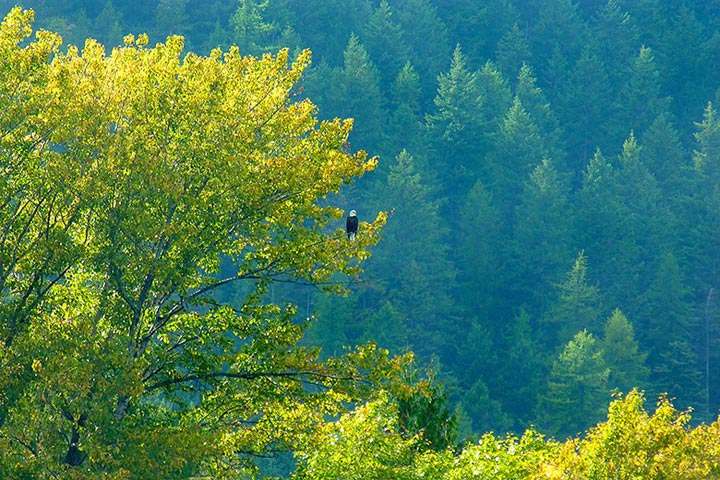 When not on the wing, the Bald Eagle lives in trees within easy reach of the Lake. It seems to favour the northern black cottonwood for its nests.
When not on the wing, the Bald Eagle lives in trees within easy reach of the Lake. It seems to favour the northern black cottonwood for its nests.
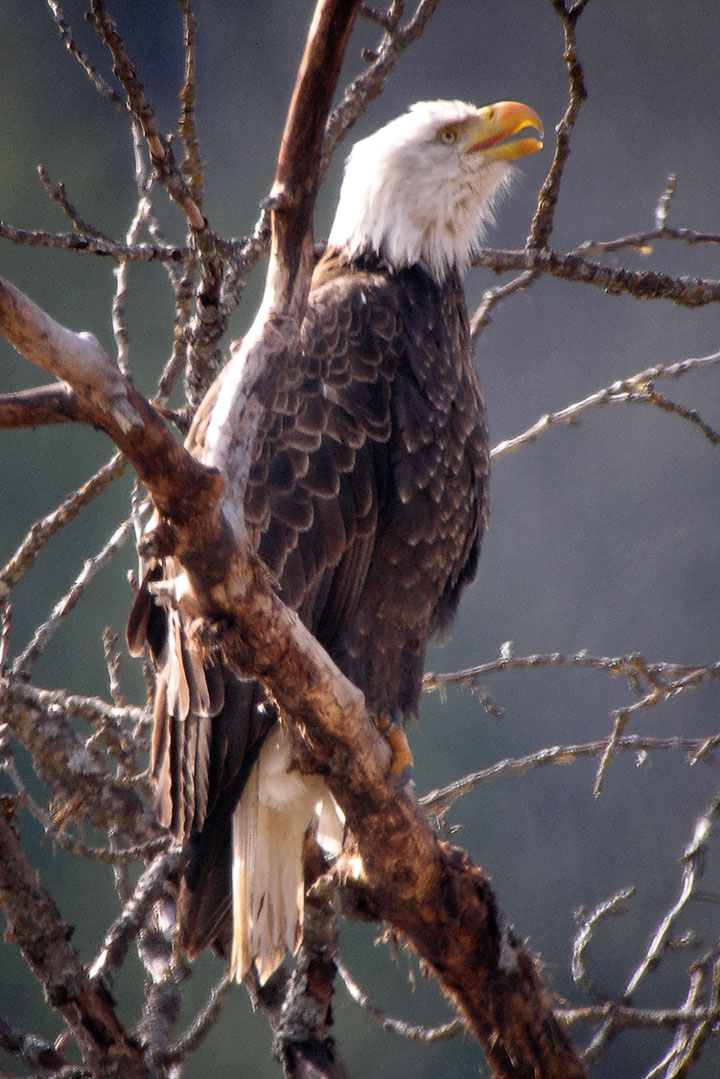 This female Bald Eagle is larger than the male (to the right).
This female Bald Eagle is larger than the male (to the right).
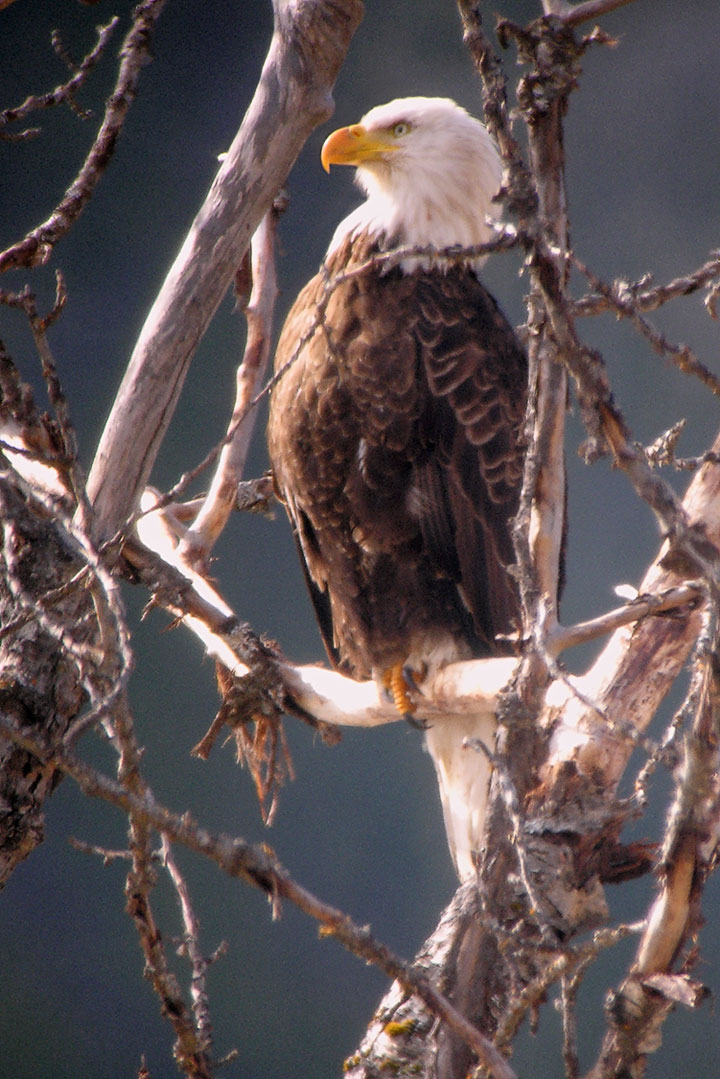 There is a size difference between the sexes among raptors. This male Bald Eagle is a bit smaller than its mate (to the left).
There is a size difference between the sexes among raptors. This male Bald Eagle is a bit smaller than its mate (to the left).
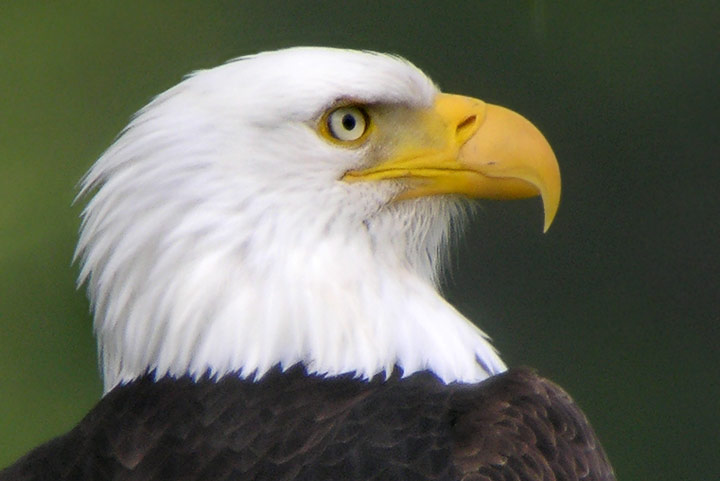 The hook on the end of the eagle’s bill is used for tearing food.
The hook on the end of the eagle’s bill is used for tearing food.
A comparison of this eagle and the one in the insert image reveals minor differences. Whether these are the result of individual variation, sex, or age is not clear.
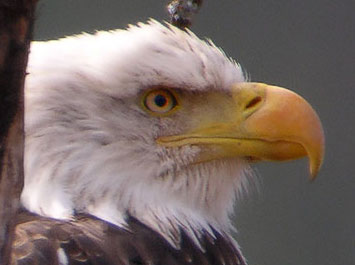
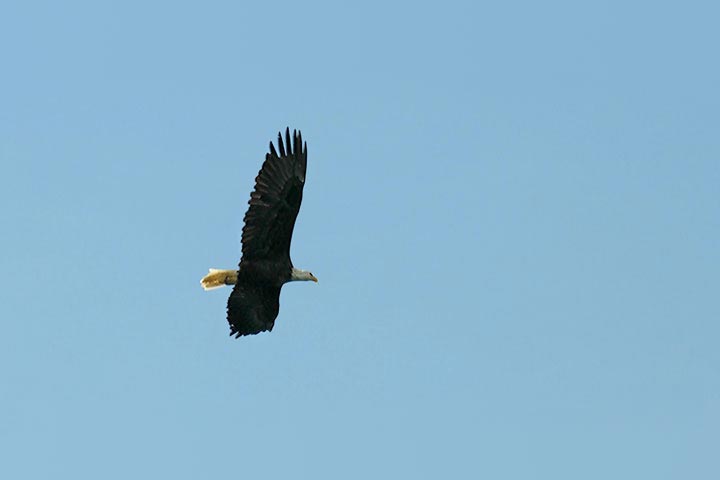 It is usually easier to spot the Bald Eagle when it is flying out over the Lake than it is to find it in the trees. Its white head and tail, but black wings make it easy to distinguish from the Osprey (which appears mainly white from below).
It is usually easier to spot the Bald Eagle when it is flying out over the Lake than it is to find it in the trees. Its white head and tail, but black wings make it easy to distinguish from the Osprey (which appears mainly white from below).
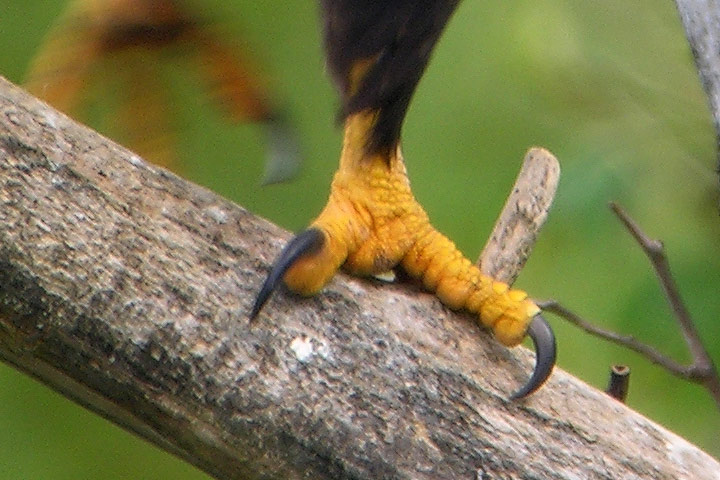 As is the eagle’s bill, its foot is yellow and menacing.
As is the eagle’s bill, its foot is yellow and menacing.
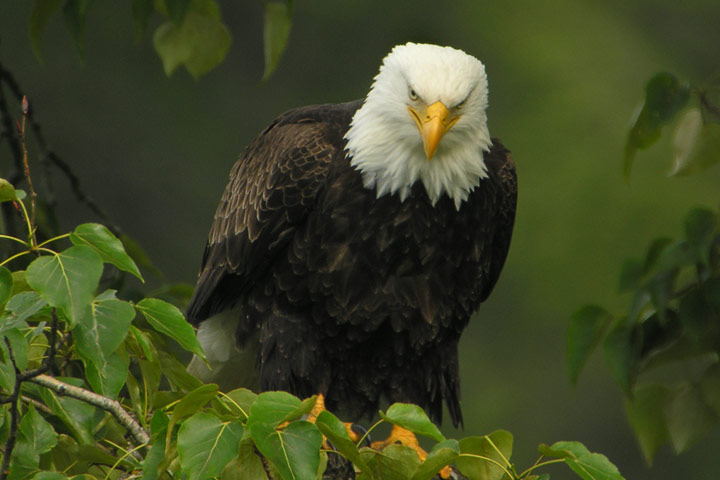 A Bald Eagle watches for prey from its perch.
A Bald Eagle watches for prey from its perch.
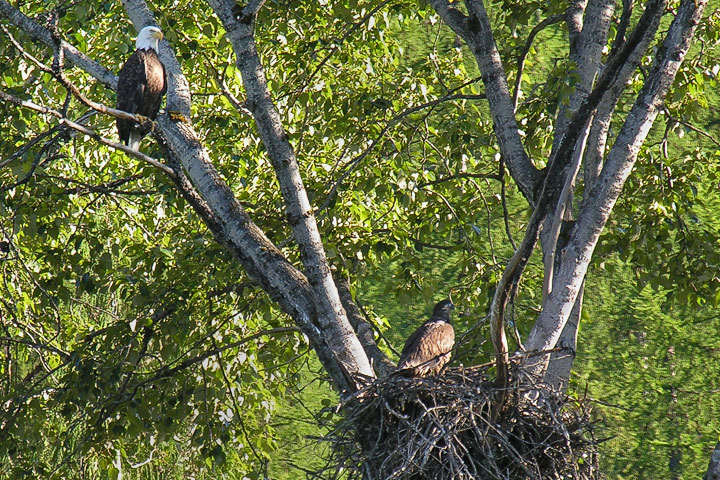 The eaglet in the nest has not yet learned to fly. Its parent is on a branch a bit higher up.
The eaglet in the nest has not yet learned to fly. Its parent is on a branch a bit higher up.
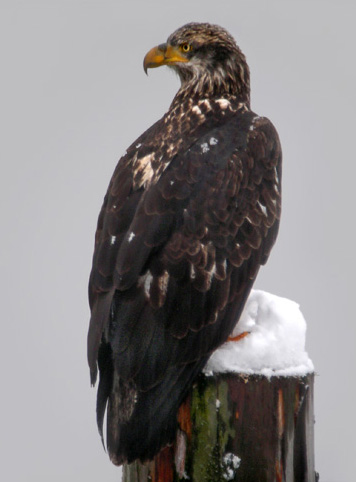 It is mid December, and a Bald Eagle watches for prey from a piling. While it did so, it occasionally looked down at three River Otters playing on the dock below. This eagle is neither a juvenile nor an adult; it is probably three years old.
It is mid December, and a Bald Eagle watches for prey from a piling. While it did so, it occasionally looked down at three River Otters playing on the dock below. This eagle is neither a juvenile nor an adult; it is probably three years old.
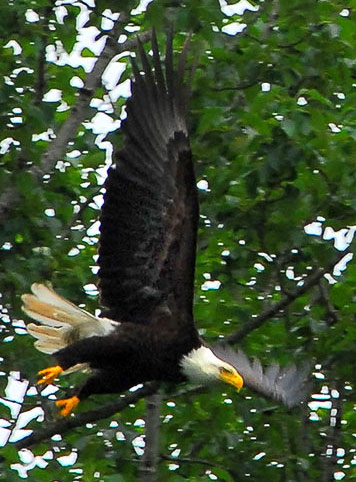 The Bald Eagle launches itself from its perch high in the trees. Its wings are spread in the downstroke.
The Bald Eagle launches itself from its perch high in the trees. Its wings are spread in the downstroke.
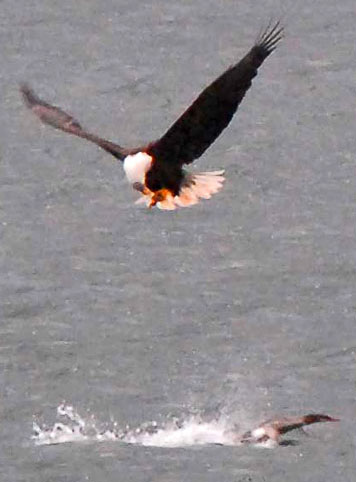 Adult eagles will hunt ducks, but often they are not successful. On this evening, the eagle dived to the water; the female merganser dived under the water; the eagle lifted up again and used a high wind to more or less hover above the same spot. The merganser surfaced, saw the eagle was still there, and took off at right angles to the eagle’s direction. In this shot the merganser has just passed across right under the eagle. But, the eagle did not seem to be able to adjust to the high wind quickly enough to get the merganser, which escaped.
Adult eagles will hunt ducks, but often they are not successful. On this evening, the eagle dived to the water; the female merganser dived under the water; the eagle lifted up again and used a high wind to more or less hover above the same spot. The merganser surfaced, saw the eagle was still there, and took off at right angles to the eagle’s direction. In this shot the merganser has just passed across right under the eagle. But, the eagle did not seem to be able to adjust to the high wind quickly enough to get the merganser, which escaped.
 When this fearsome-looking bird flew by, smaller birds hit the deck. This Bald Eagle was probably hatched two summers ago. For the first year of life, the juvenile eagle is brown with white trim. This bird seems to be part way through the protracted moult which begins after its first year.
When this fearsome-looking bird flew by, smaller birds hit the deck. This Bald Eagle was probably hatched two summers ago. For the first year of life, the juvenile eagle is brown with white trim. This bird seems to be part way through the protracted moult which begins after its first year.
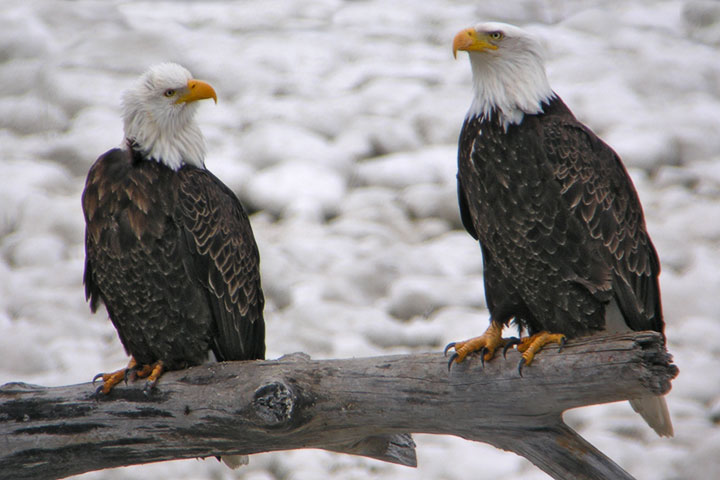 The size difference between the sexes is clearly evident in this February picture of an eagle pair. The larger female is on the right.
The size difference between the sexes is clearly evident in this February picture of an eagle pair. The larger female is on the right.
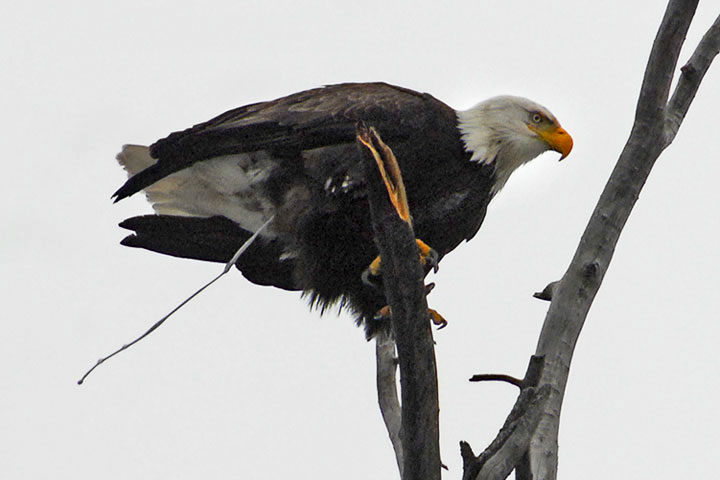 Typically, just before taking to the air, an eagle defecates to lighten its load.
Typically, just before taking to the air, an eagle defecates to lighten its load.
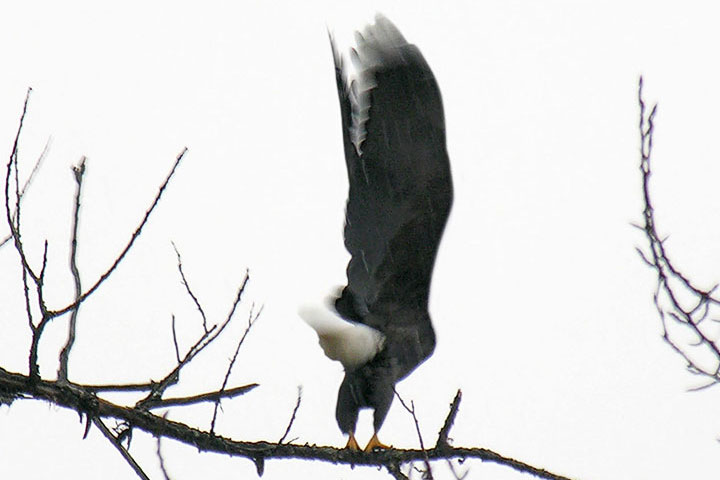 The eagle raises its wings in preparation for flying. It increases lift during takeoff with the clap-fling manoeuvre: at the beginning of the downstroke the wings are clapped together over the head and then flung open, spreading first at the leading edge to form a V. The air which rushes into the gap instigates the wake vortex earlier than it would have with a simple downstroke.
The eagle raises its wings in preparation for flying. It increases lift during takeoff with the clap-fling manoeuvre: at the beginning of the downstroke the wings are clapped together over the head and then flung open, spreading first at the leading edge to form a V. The air which rushes into the gap instigates the wake vortex earlier than it would have with a simple downstroke.
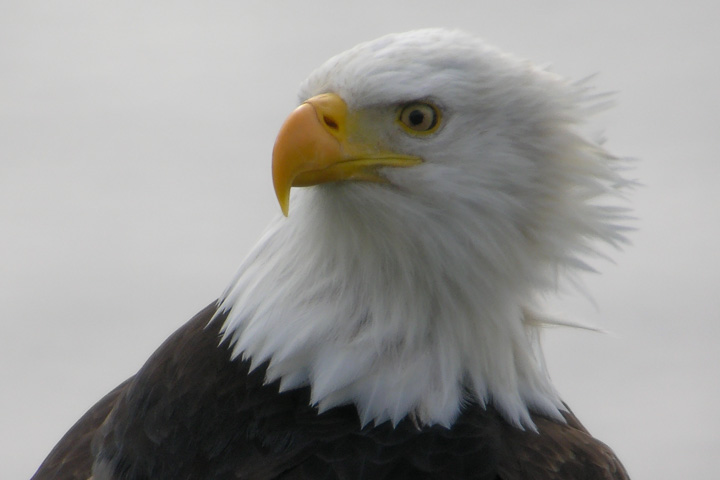 This Bald Eagles is just looking up after finishing a meal of fish.
This Bald Eagles is just looking up after finishing a meal of fish.
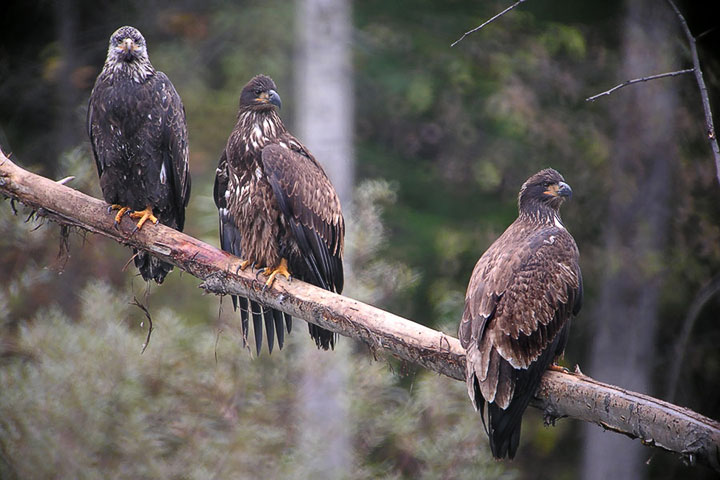 It is October; three juvenile Bald Eagles perch on a snag above the Lardeau River. They occasionally fly down and feast on spawning Kokanee.
It is October; three juvenile Bald Eagles perch on a snag above the Lardeau River. They occasionally fly down and feast on spawning Kokanee.
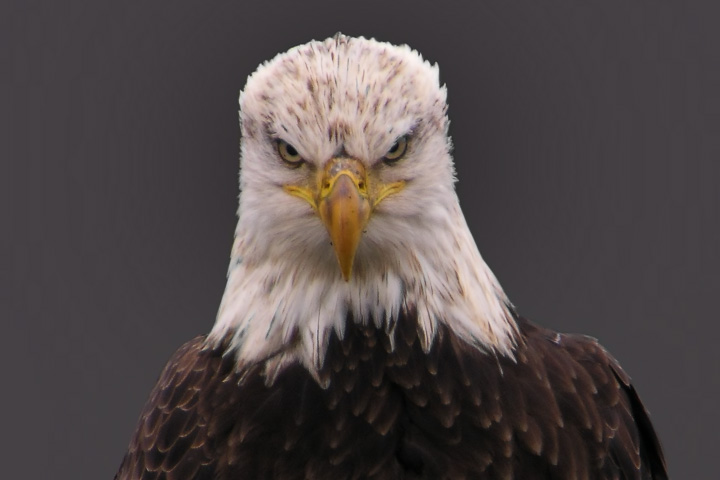 Here ’s looking at you.
Here ’s looking at you.
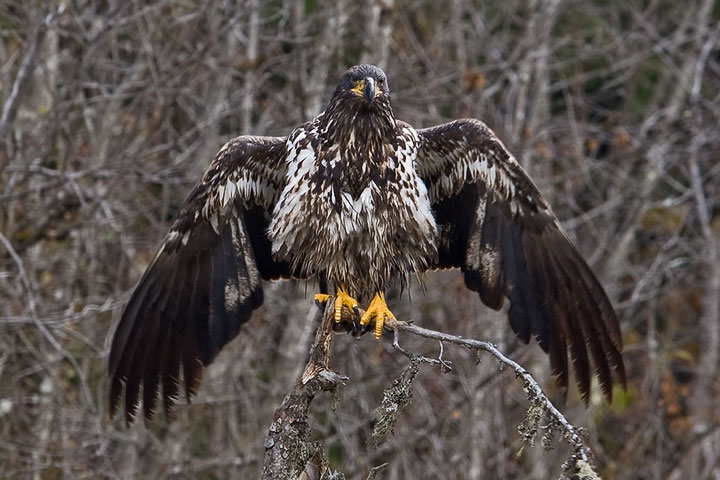 This Bald Eagle is likely a juvenile (less than a year old).
This Bald Eagle is likely a juvenile (less than a year old).  Catherine Aitken
Catherine Aitken
 All birds have a third eyelid. Called the nictitating (blinking) membrane, it sweeps across the eye cleaning and lubricating its surface.
All birds have a third eyelid. Called the nictitating (blinking) membrane, it sweeps across the eye cleaning and lubricating its surface.
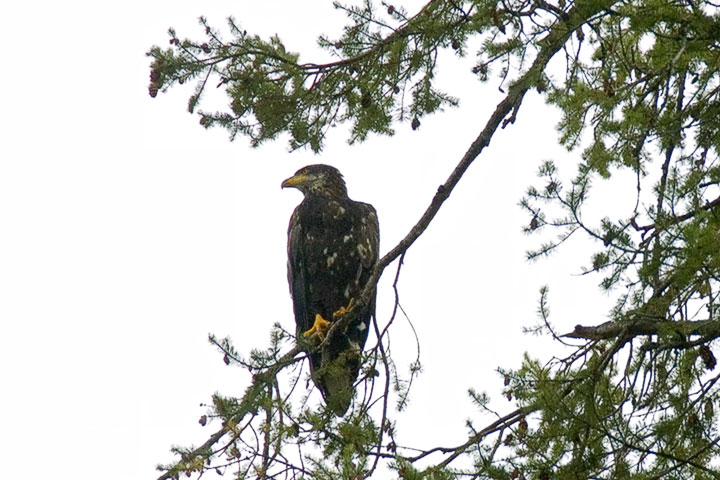 It is September and this year’s fledgling has moved out of the nest and is watching the world from very high in a Douglas Fir tree.
It is September and this year’s fledgling has moved out of the nest and is watching the world from very high in a Douglas Fir tree.
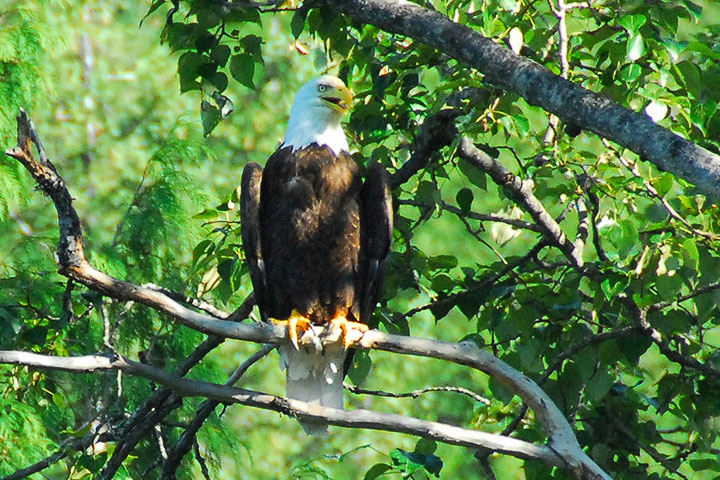 The adult Bald Eagle has the striking plumage of a dark body, and a white head and tail. This one is sitting on a tree branch near its nest and chick.
The adult Bald Eagle has the striking plumage of a dark body, and a white head and tail. This one is sitting on a tree branch near its nest and chick.
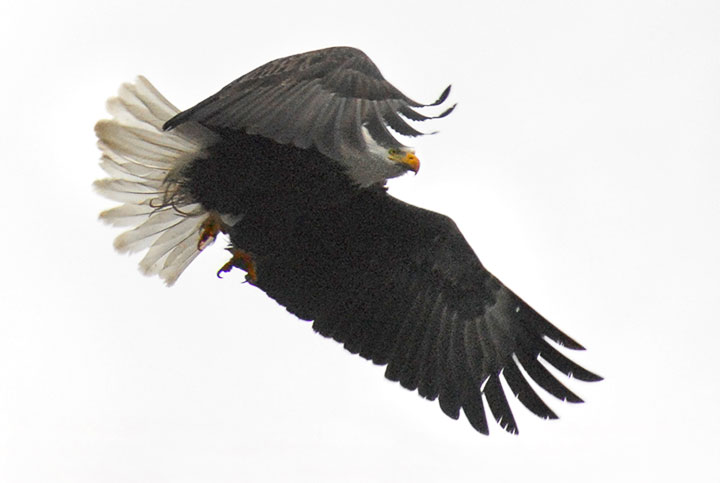 During the upstroke, the eagle decreases the area of its wings by bending them at the wrists.
During the upstroke, the eagle decreases the area of its wings by bending them at the wrists.
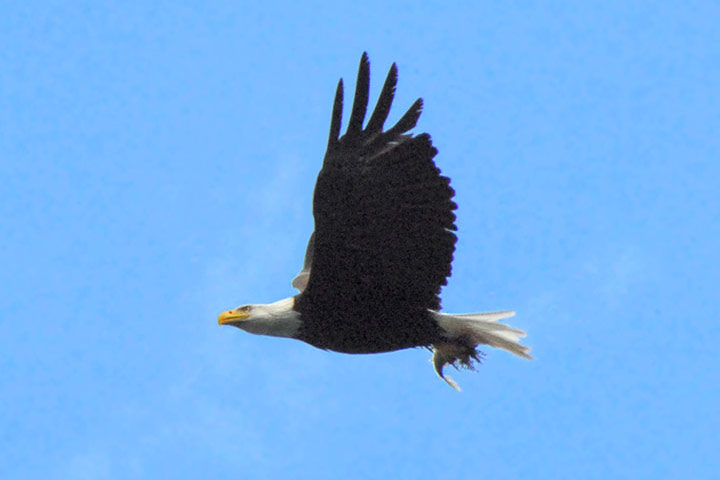 A fish is being carried back to the nest.
A fish is being carried back to the nest.
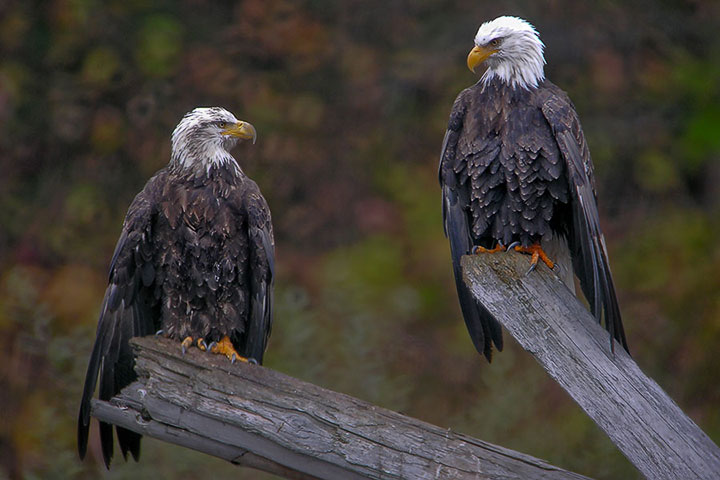 At the age of three, the Bald Eagle still shows brown flecking on its head.
At the age of three, the Bald Eagle still shows brown flecking on its head.
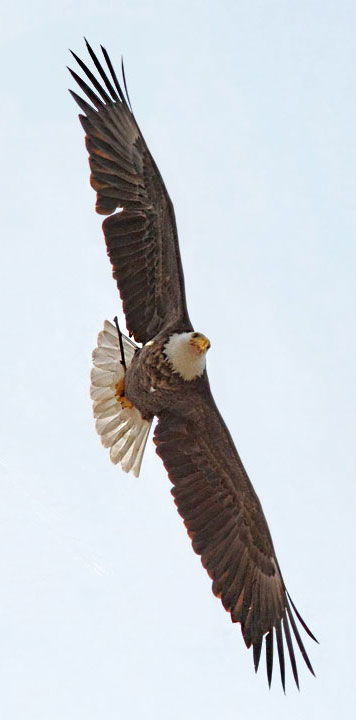 It is springtime and an adult Bald Eagle carries a stick to contribute to its nest.
It is springtime and an adult Bald Eagle carries a stick to contribute to its nest.
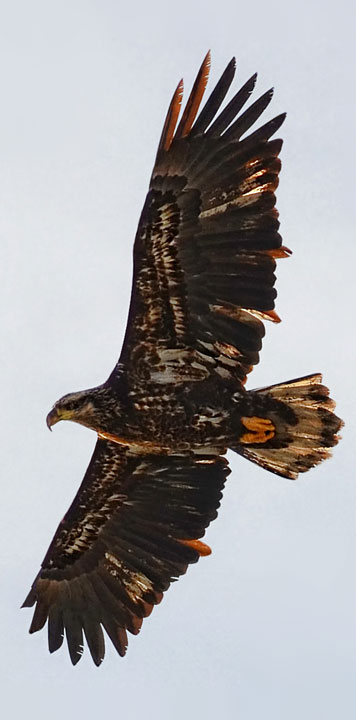 A sub-adult (two–and–a–half–years old) eagle flies by.
A sub-adult (two–and–a–half–years old) eagle flies by.
 A Bald Eagle decides to take a pidgeon out to lunch.
A Bald Eagle decides to take a pidgeon out to lunch.
Information from Wikipedia: Bald Eagle.
![]()